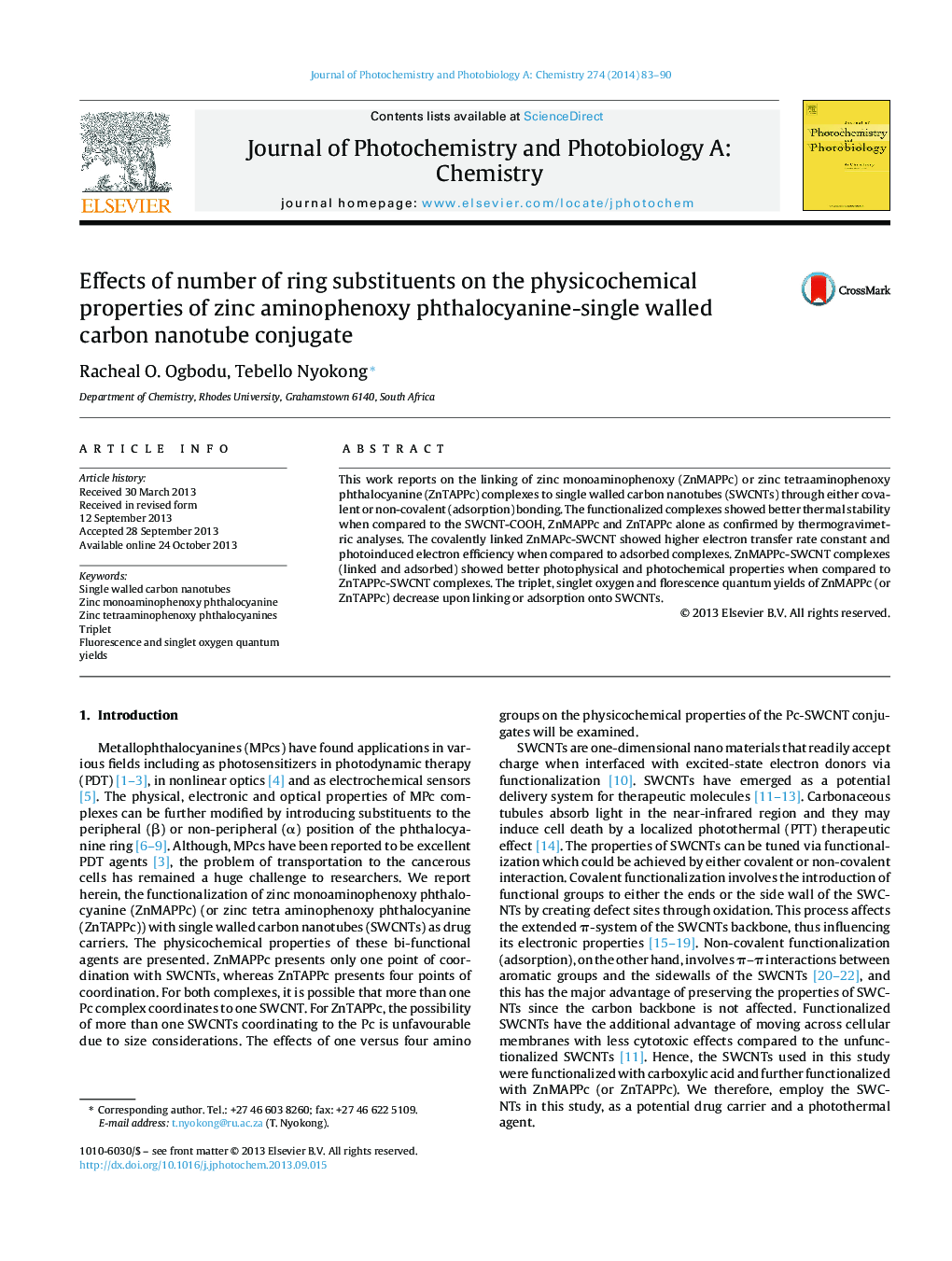| Article ID | Journal | Published Year | Pages | File Type |
|---|---|---|---|---|
| 26779 | Journal of Photochemistry and Photobiology A: Chemistry | 2014 | 8 Pages |
•Zinc monoaminophenoxy or zinc tetraaminophenoxy phthalocyanine complexes are linked to single walled carbon nanotubes.•The covalently linked complexes showed a higher electron transfer rate constant and photoinduced electron efficiency when compared to adsorbed complexes.•Zinc monoaminophenoxy phthalocyanine complexes (linked and adsorbed) showed better photophysical and photochemical properties when compared to tetrasubstituted derivatives.•The triplet, singlet oxygen and florescence quantum yields of the phthalocyanine complexes decrease upon linking or adsorption onto single walled carbon nanotubes.
This work reports on the linking of zinc monoaminophenoxy (ZnMAPPc) or zinc tetraaminophenoxy phthalocyanine (ZnTAPPc) complexes to single walled carbon nanotubes (SWCNTs) through either covalent or non-covalent (adsorption) bonding. The functionalized complexes showed better thermal stability when compared to the SWCNT-COOH, ZnMAPPc and ZnTAPPc alone as confirmed by thermogravimetric analyses. The covalently linked ZnMAPc-SWCNT showed higher electron transfer rate constant and photoinduced electron efficiency when compared to adsorbed complexes. ZnMAPPc-SWCNT complexes (linked and adsorbed) showed better photophysical and photochemical properties when compared to ZnTAPPc-SWCNT complexes. The triplet, singlet oxygen and florescence quantum yields of ZnMAPPc (or ZnTAPPc) decrease upon linking or adsorption onto SWCNTs.
Graphical abstractZinc monoaminophenoxy or zinc tetraaminophenoxy phthalocyanine complexes are linked to single walled carbon nanotubes through either covalent or non-covalent (adsorption) bonding. The covalently linked complexes showed a higher electron transfer rate constant and photoinduced electron efficiency than adsorbed complexes.Figure optionsDownload full-size imageDownload as PowerPoint slide
